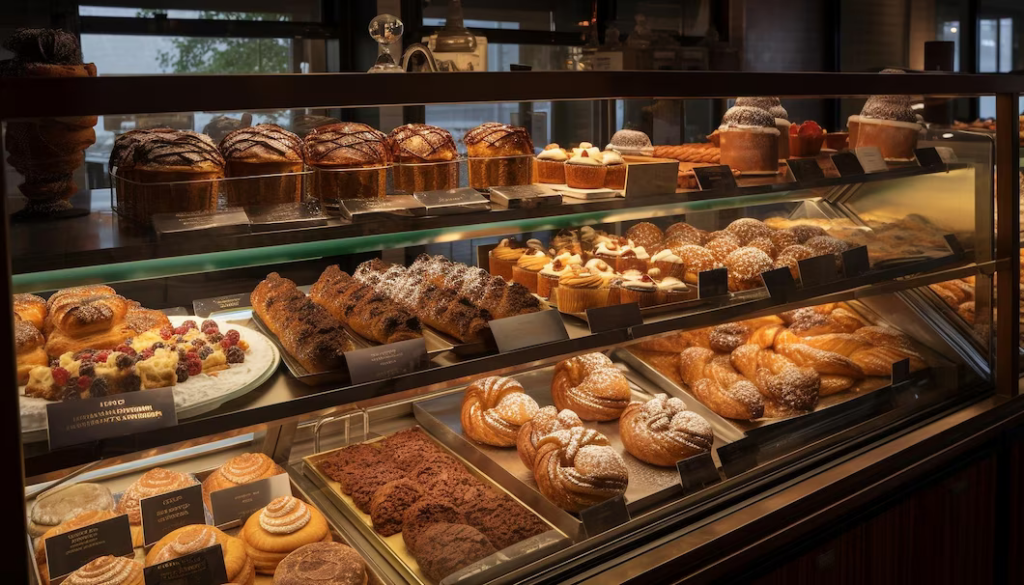In the world of baking and pastry, presentation is everything. A well-designed bakery menu can entice customers and elevate their dining experience. Whether you’re a seasoned bakery owner or just starting, mastering the art of creating an eye-catching bakery menu is vital for your business’s success.
With this comprehensive guide, we’ll explore the key elements of menu design, the importance of visual appeal, and how to strike the perfect balance between aesthetics and functionality. Let’s dive in and complete a menu designer that leaves your customers craving more!
1. Understanding the Target Audience
Before diving into the design process, it’s crucial to understand your target audience. Analyze the demographics of your customers – their age, preferences, and interests. For instance, a bakery menu targeted at kids might feature playful fonts and vibrant colors, while a sophisticated menu for a high-end clientele would call for an elegant and refined design.
2. Choosing the Right Color Scheme
Colors evoke emotions and play a significant role in menu design. Opt for a color scheme that aligns with your bakery’s branding and atmosphere. Warm tones like oranges and browns can create a cozy feel, while pastel shades impart a sense of delicacy. Balance vibrant colors with neutral backgrounds to ensure readability.
For a visually appealing touch, consider incorporating our professionally crafted bakery menu template design, which can complement your delectable offerings and enhance the overall dining experience.
3. Selecting Fonts with Impact
Fonts can make or break your menu’s visual appeal. Avoid using too many fonts and stick to two or three that complement each other. For headings, go for bold and attention-grabbing fonts, while body text should be clear and legible. Stay away from overly fancy fonts that hinder readability.
4. Utilizing High-Quality Food Photography
Nothing entices customers more than seeing mouthwatering images of your baked goods. Invest in professional food photography to showcase your menu items. High-quality images can make a significant difference in customer perception and encourage them to try new treats.
5. Organizing Menu Sections
Create a logical flow in your menu by categorizing items into sections. Consider dividing the menu into sections like breakfast, pastries, cakes, and beverages. Avoid cluttering and provide ample white space to give the menu a clean and organized look.
6. The Power of Descriptive Language
Use compelling and descriptive language to showcase your offerings. Instead of simple item names, craft enticing descriptions that highlight the flavors and uniqueness of your bakery products. Engage your customers’ senses through words.
7. Incorporating Allergen Information
In today’s world, many customers have dietary restrictions and allergies. Ensure that your menu includes allergen information for each item. Clearly state if a product contains nuts, gluten, or other common allergens to help customers make informed choices.
8. Emphasizing Special Offers and Promotions
Boost sales by highlighting special offers, seasonal treats, and promotions on your menu. Use eye-catching icons or graphics to draw attention to these deals. Limited-time offers can create a sense of urgency, prompting customers to try new items.
9. Creating a User-Friendly Layout
Simplicity is key when it comes to the layout. Avoid cluttered designs and use bullet points or numbering for easy reading. Ensure that the font size is legible, especially for older customers or young children.
10. Printing and Displaying the Menu
Select high-quality printing options for your bakery menu. Choose durable materials and finishes that can withstand frequent handling. Place the menu strategically in your bakery, ensuring it is visible to everyone and easily accessible.
The Last Line
Creating an eye-catching bakery menu is an art that requires careful consideration of design elements and customer preferences. By understanding your audience, using attractive visuals, and providing useful information, you can craft a menu that not only entices but also leaves a lasting impression on your customers. Remember to regularly update your menu, experiment with new offerings, and maintain consistency in your branding.


